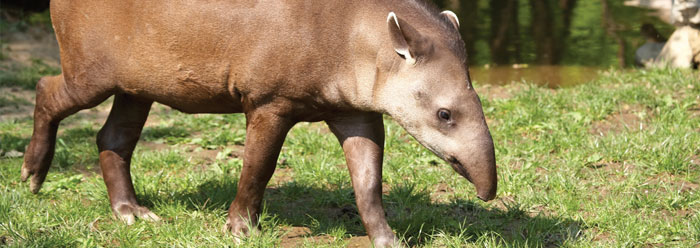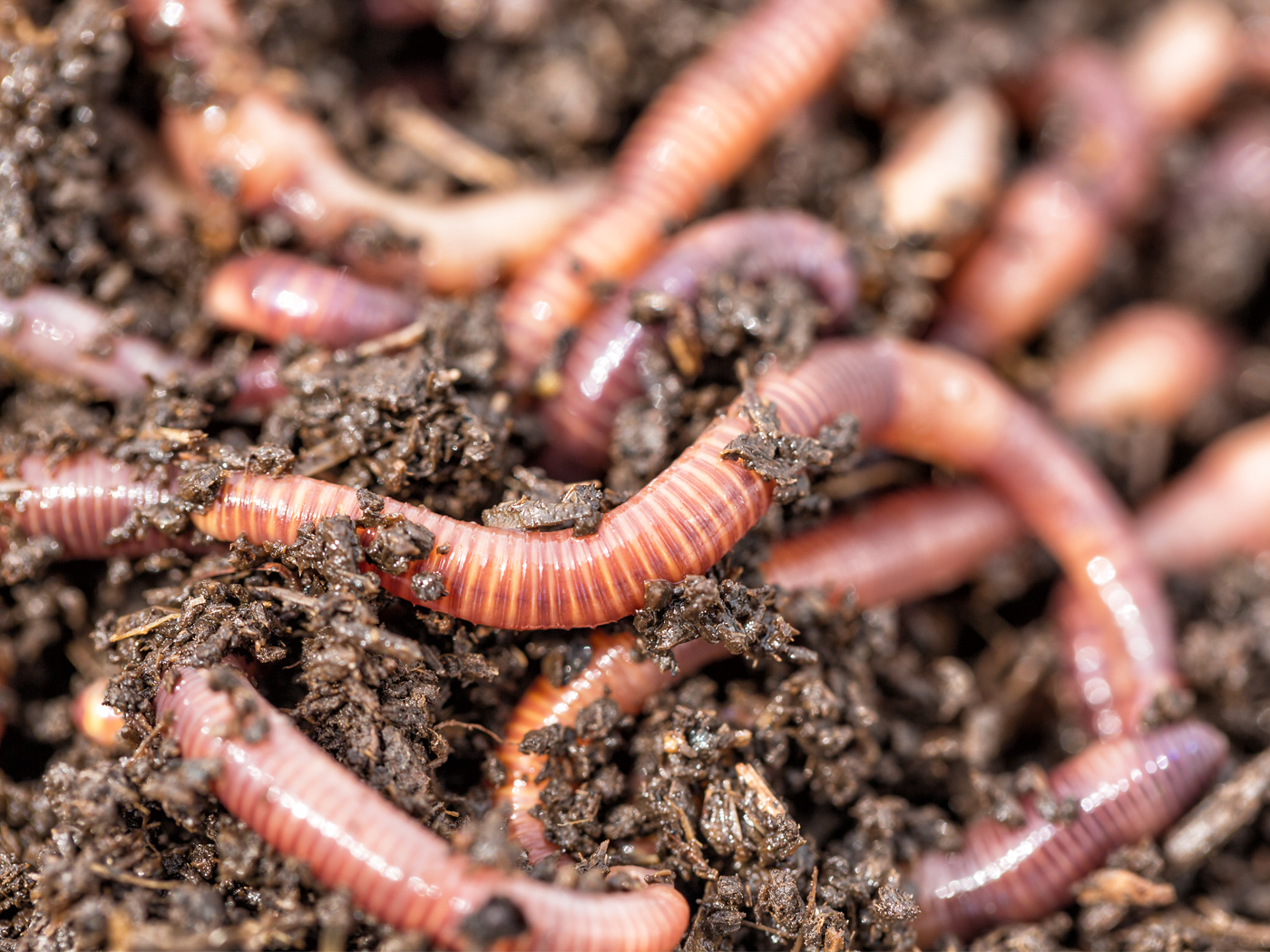One odd-looking member of God's creation is the tapir. Its most distinctive feature is a highly flexible proboscis (trunk) that is able to move in all directions. Generally, tapirs stand about three feet high at the shoulder, are about seven feet long, and weigh anywhere from 330 to 700 pounds. Their short fur coats range in color from grayish-black to reddish-brown.
Zoologists have classified tapirs in four species, two American and two Asian. They have a good appetite--some tapirs can eat up to 85 pounds of vegetation per day! Tapir varieties fill different ecological niches. In South America, there are both lowland and mountain tapirs.
All baby tapirs are designed with stripes and spots to camouflage them from predators. Adults in danger flee into the brush, submerge themselves, or deliver a nasty bite from powerful jaws. Tapirs love the water--it provides protection from predators, succulent vegetation, and relief from the heat. Tapirs have been known to totally submerge themselves, allowing small fish to pick external parasites from their porcine bodies.
What was the origin of these nocturnal and solitary creatures? It would seem from the evidence that tapirs were created as tapirs, as would follow from the Genesis account. They are little different from others of this same perissodactyl group (odd-toed mammals) found in Eocene and Oligocene sediments.
For example, tapirids such as Heptodon show up in the early Eocene looking very similar to modern forms, but they differ in size and have "not so much of a flexible nose or proboscis as seen in living tapirs."1 Other tapirs (some would say "true tapirs") appear in Oligocene rocks. Genera such as Miotapirus in Miocene strata were just like today's species. The New World Encyclopedia stated, "The earliest fossil tapir dates to the early Oligocene (about 30 million years), and Eocene rocks from as early as 55 million years ago contain a wide range of tapir-like animals, and they have changed little since."2
Evolutionist Barbara Stahl claimed that "tapirs had emerged by Oligocene time from one of a number of primitive Eocene stocks and spread over North America and Eurasia. Since that time, they have changed hardly at all."3 Paleontologist E. H. Colbert stated only that Protapirus of "Oligocene times" is a "probable descendent of Heptodon."4
In his textbook Vertebrate Paleontology, paleontologist Michael Benton displayed a skull of Heptodon and wrote rather diffidently, "Early tapirs, such as Heptodon from the Eocene of North America (Figure 10.36(a)), probably looked rather like the contemporaneous horses.5 Note that Benton is not calling Heptodon transitional to modern tapirs, as some evolutionists do. Instead, he calls it an "early tapir," using words like "probably" and "rather like" to give it a horse-like appearance. (Some evolutionists believe tapirs may have evolved from the Hyracotherium, a "primitive" horse.)
In June 2007, "a complete skull of a fossil tapir (Perissodactyla: Tapiridae)" from the Late Pleistocene was discovered.6 The authors called it a new species, but it is still obviously a tapir.
Despite the evolutionary word games, it is evident that tapirs (including Heptodon and Miotapirus) have always been tapirs, just as Genesis indicates.
References
- Colbert, E. H., M. Morales and E. C. Minkoff. 2001. Colbert's Evolution of the Vertebrates. New York: Wiley-Liss, 471.
- Tapir. New World Encyclopedia. Posted online at newworldencyclopedia.org/entry/Tapir, accessed November 30, 2009, emphasis added.
- Stahl, B. 1985. Vertebrate History: Problems in Evolution. New York: Dover Publishing, 496.
- Colbert et al, 471.
- Benton, M. J. 2005. Vertebrate Paleontology. Malden, MA: Blackwell Publishing, 347, emphasis added.
- Ferrero, B. S. and J. I. Noriega. 2007. A new upper Pleistocene tapir from Argen tina. Journal of Vertebrate Paleontology. 27 (2):504-511.
* Mr. Sherwin is Senior Science Lecturer at the Institute for Creation Research.
Cite this article: Sherwin, F. 2010. Tapir Testimony to Creation. Acts & Facts. 39 (1): 15.














